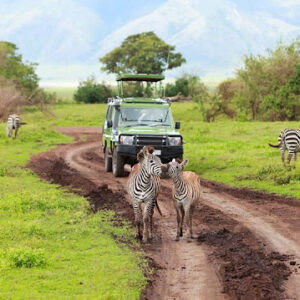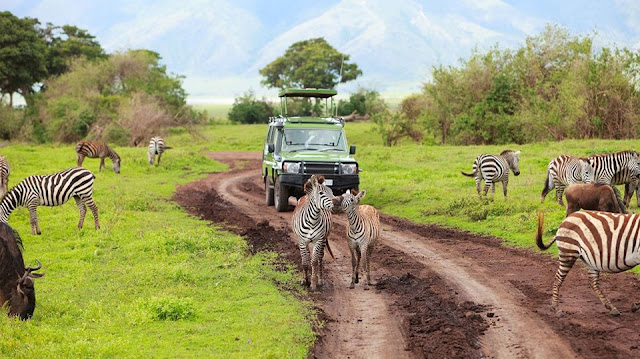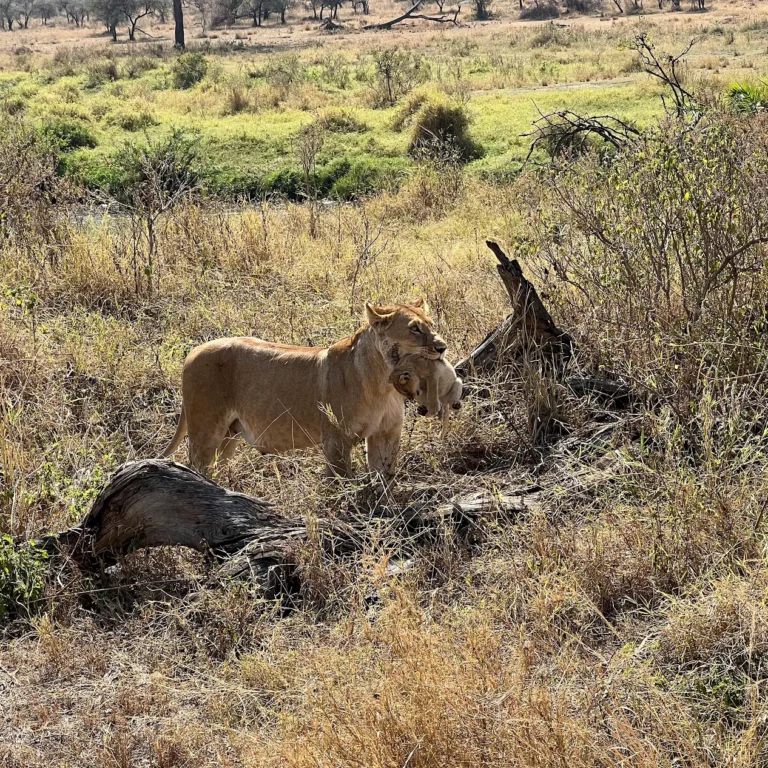Climbing Mount Kilimanjaro is an extraordinary adventure, filled with breathtaking landscapes, physical exertion, and immense personal triumph. Amidst the grandeur of glaciers and vast plains, there’s a less glamorous but equally crucial aspect of daily life on the mountain: managing your bodily functions. Understanding the types of toilets available. The sanitation practices and essential hygiene tips is vital for your comfort, health, and the preservation of this incredible natural wonder.
Kilimanjaro offers two types of toilet facilities: public long-drop toilets and private portable toilets. Public toilets are basic, wooden structures built around a hole in the ground, while private toilets are chemical toilets housed in individual tents, often provided by tour operators. This guide will provide you with all you need to know about toilets on Kilimanjaro, helping you prepare for a fundamental part of the trekking experience.
1. Types of Toilets on Kilimanjaro
The kind of toilet facilities you encounter on Kilimanjaro depends heavily on your chosen route and, in some cases, your tour operator. There are generally three main scenarios: On Mount Kilimanjaro, the toilet facilities are primarily public long-drop latrines and private portable toilets. Public toilets are basic, often resembling outhouses with a hole in the ground, while private toilets, often tented, offer a more enclosed and hygienic experience
Private Toilets on Kilimanjaro (Portable Toilet Tents)
Most reputable tour operators on the camping routes (such as Machame, Lemosho, Rongai, Umbwe, and Northern Circuit) provide private portable toilet tents for their groups. This is the gold standard for hygiene and comfort on the mountain. Private toilet tents are available on Kilimanjaro as a more comfortable and hygienic alternative to the public toilets. These portable chemical toilets. Set up in private tents, offer a cleaner and more private experience during your trek. They are a premium option, especially for those seeking a familiar and sanitary experience in the unfamiliar mountain environment.
What They Are. These are small, standalone dome tents, typically set up a short distance from your main sleeping and dining tents at each campsite. Inside, you’ll find a sturdy, plastic commode with a proper toilet seat, often over a bucket system (which is discreetly emptied and cleaned by porters).
Benefits. They offer significant privacy and are generally much cleaner and more hygienic than public options. They are maintained by your crew, reducing exposure to germs.
Availability. While common on camping routes, always confirm with your tour operator if private toilet tents are included in your package.
Public Toilets on Kilimanjaro (Long Drop/Pit Latrines)
These are the facilities provided by Kilimanjaro National Park at designated campsites. They are found on all routes, including the Marangu Route’s huts and alongside the public camping areas on other routes. Public toilets on Mount Kilimanjaro are typically basic “long drop” or pit latrines. These are simple structures built over a hole in the ground, and while they are available at every campsite, they can be unpleasant due to odors and hygiene issues, especially during peak seasons when they are heavily used.
What They Are. Public toilets vary in condition and cleanliness. At lower altitudes, they might be basic concrete block structures with squat toilets or rudimentary long drops (a hole in the ground). As you ascend, they often become simpler pit latrines, sometimes just a wooden shed over a deep hole.
Cleanliness. These can range from moderately clean to very unhygienic, depending on usage, maintenance, and recent cleaning efforts. They are shared by all climbers and support staff using the public campsites. The public toilets are long drops that are open to anyone. They’re usually used by mountain crews and by climbers travelling with budget tour operators. Understandably, the public toilets aren’t as clean as the private toilets. And being long drops, they can get really smelly.
Drawbacks. Lack of privacy (often no proper doors or locks), strong odors, and high potential for unsanitary conditions due to heavy usage. Toilet paper is rarely provided.
Marangu Route Specific. While Marangu huts boast flush toilets at Mandara and Horombo, these can still be basic, and Kibo Hut reverts to pit toilets due to the lack of running water at that altitude.
Toilets During Transitions Between Camps (On the Trail)
During your daily treks between camps, there are no formal toilet facilities along the trail for most of the way. During transitions between campsites on a trail, you’ll typically need to manage bathroom breaks with a combination of finding secluded spots and using personal or portable toilet solutions. For urination, finding a private spot behind a tree or bush is common, but for more comprehensive needs, carrying a container, such as a specialized product like Shewee or Peebol, or a personal toilet kit, can be helpful. When defecating, find a secluded spot, use disposable plastic bags for waste collection, and carry out all waste to the next campsite.
What to Expect. When nature calls, you’ll need to step off the trail. Your guide will advise you on the appropriate etiquette:
“Leave No Trace”. Move at least 50-100 meters (150-300 feet) off the main path and away from water sources.
Dig a Cathole. If you need to defecate, dig a small “cathole” (about 6-8 inches deep) with a stick or rock, do your business, and then cover it completely with soil and rocks.
Pack Out All Waste. Crucially, all toilet paper and sanitary products must be packed out with you. Do NOT bury or leave toilet paper behind, as it does not decompose at altitude. Carry small, sealable plastic bags (Ziploc bags) for this purpose, which you can then dispose of properly at camp or back in civilization.
2. Sanitation Facilities at Different Kilimanjaro Campsites
To provide a clearer picture, here’s a route-specific breakdown: Kilimanjaro campsites generally offer basic public toilet facilities, often described as “long drop” or pit toilets, which are essentially holes in the ground enclosed by a simple structure. While these facilities are available at every campsite, their conditions can vary, and they are typically not equipped with amenities like sinks, soap, or western-style toilets. Some routes, like the Marangu route, offer slightly more developed facilities, including cold showers. It’s wise to prepare for basic conditions by bringing your own toilet paper, hand sanitizer, and potentially a pee bottle for nighttime use.
Marangu Route (Huts):
Mandara Hut (2,700m). Flush toilets, cold running water.
Horombo Hut (3,720m). Flush toilets, cold running water. More numerous than Mandara.
Kibo Hut (4,703m): Pit toilets only. No running water.
General. Basic facilities can be crowded. Hand sanitizer is essential.
Camping Routes (Machame, Lemosho, Rongai, Umbwe, Northern Circuit). All Campsites. Primarily utilize public long drop/pit latrines provided by the park. These vary in cleanliness and upkeep.
Private Operators. If your tour operator provides private toilet tents, these will be set up at each campsite for your group’s exclusive use. Offering a significantly cleaner and more comfortable experience than the public facilities.
Water. Running water is not available. Water for washing (if provided) will be heated by your crew in basins.
3. Hygiene Tips for Trekkers / 4. Practice Good Hygiene
Maintaining proper hygiene on Kilimanjaro is paramount to prevent illness and ensure a more pleasant experience.
Hand Sanitizer. This is your best friend. Use it liberally after every toilet visit, before eating, and after touching communal surfaces. Carry a large bottle in your daypack and a smaller one in your pocket.
Wet Wipes/Biodegradable Soap:
Wet Wipes: Essential for personal cleaning, especially when showers are unavailable (which is most of the time). Opt for biodegradable wipes if possible. Remember to pack out all used wipes – they do not decompose on the mountain.
Biodegradable Soap: For quick “bucket showers” if your crew provides warm water for washing.
Personal Toiletries: Bring your own toilet paper (a full roll per person is a good idea, as it’s not supplied), small packets of tissues, and any other personal hygiene products you need.
“Toilet Kit” Bag: Keep all your toilet-related items (TP, wipes, hand sanitizer, Ziploc bags) together in a small. Waterproof pouch that you can easily grab for quick trips to the facilities.
Waste Disposal:
Pack It Out: Absolutely everything that doesn’t naturally decompose (toilet paper, wet wipes, sanitary products, snack wrappers, plastic bottles, etc.) must be carried off the mountain. Your porters will handle larger waste bags. But be prepared to store your trash (especially used toilet paper from on-trail stops) in sealable bags in your daypack until you can dispose of it at camp.
Use Designated Areas: At campsites, use the provided waste bins.
5. Toilets on Kilimanjaro: What to Expect (General Overview
On Kilimanjaro, you can generally expect public long-drop toilets at each campsite, which are essentially holes in the ground within a simple wooden structure. These can be quite basic and potentially unsanitary due to heavy use. Especially during peak season. Some operators also offer private portable toilet tents for a more comfortable experience.
- Simplicity: Don’t expect luxury. Facilities are basic but functional.
- Smells: Odors, especially from public pit latrines, can be strong. Try not to linger.
- Cold: Toilets are unheated, and trips in the night can be very cold, particularly at high altitudes. Dress warmly for night excursions.
- Night Trips: Keep your headlamp easily accessible for middle-of-the-night trips.
- Respectful Use: Always leave the facility as clean as possible for the next person.
6. Environmental Impact and Etiquette
Mount Kilimanjaro is a fragile ecosystem, and every climber has a responsibility to minimize their environmental footprint. “Leave No Trace” principles are paramount.
Pack It In, Pack It Out: This is the golden rule. Nothing, absolutely nothing, should be left on the mountain that wasn’t there before you arrived. This includes all human waste (if not using designated toilets), toilet paper, and wet wipes.
Use Catholes Correctly: If you must go on the trail, dig a shallow hole away from water sources and trails, and bury your solid waste. Always pack out your toilet paper and sanitary items.
Water Contamination: Be mindful of not contaminating water sources. Public toilets are often near water, but private portable toilets are generally placed with this in mind.
Avoid Littering: Even small items like fruit peels take a long time to decompose at high altitudes and are considered litter. 7. Private vs. Public Toilets on Kilimanjaro
Private vs public vs transition toilet on Kilimanjaro. On Kilimanjaro, toilet options vary: public toilets at camps are basic, shared, and often unsanitary. Private toilets, brought by tour companies, offer cleaner, portable facilities with privacy and hygiene. Transition toilets serve as semi-private setups, usually upgraded camp toilets managed by the operator. Offering improved cleanliness over public ones. While public toilets are free, private and transitional toilets often cost extra, enhancing comfort. Choosing between them depends on budget, privacy preferences, and tolerance for rough conditions on the mountain.
- Hygiene During Kilimanjaro Expeditions | Essential Tips.
- Sleeping on Kilimanjaro
- Types of Tents and Huts on Mount Kilimanjaro
- Do you Shower When Climbing Kilimanjaro?
- Seronera Public Campsite








